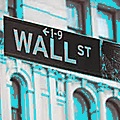- By -Staff
- News
 Print
Print  The securities industry started strong in the first half of 2013, reporting profits of $10.1 billion, but higher interest rates, litigation costs and the uncertainty created in Washington D.C. could put a damper on earnings in the second half of the year, according to an analysis released today by New York State Comptroller Thomas P. DiNapoli.
The securities industry started strong in the first half of 2013, reporting profits of $10.1 billion, but higher interest rates, litigation costs and the uncertainty created in Washington D.C. could put a damper on earnings in the second half of the year, according to an analysis released today by New York State Comptroller Thomas P. DiNapoli.“The political gridlock in Washington may take a bite out of the securities industry’s profits for the fourth quarter,” DiNapoli said. “Washington’s inability to resolve budget and fiscal issues is bad for business. Wall Street has undergone substantial changes since the financial crisis yet it remains profitable, contributing to the improved finances of New York City and New York state. Failure to resolve the federal budget and debt ceiling impasse could disrupt the economy and hurt New York City and New York state."
After two years of record losses in 2007 and 2008, the securities industry had four years of profitability fueled by low interest rates, including three years with the highest profits on record (as measured by broker/dealer profits of the member firms of the New York Stock Exchange). Industry profitability was strong throughout 2012, reaching $23.9 billion, which was the third-highest level on record and higher than any year before the crisis.
Profits for the first half of 2013 of $10.1 billion were close to the pace of 2012 but appear to be slowing. As the securities industry grapples with higher interest rates, litigation costs, and the turmoil over the federal budget and the debt limit, DiNapoli projects that profitability could be lower in the second half of the year, limiting overall earnings to $15 billion in 2013. Over the longer term, it remains to be seen how the securities industry will perform as the Federal Reserve addresses interest rates and additional regulatory changes are implemented.
Despite its profitability over the past four years, the securities industry is smaller in New York City than before the financial crisis, dipping to 163,400 jobs in August 2013, a 13.5 percent drop in employment. DiNapoli predicts the industry will continue to streamline as it adapts to the changing regulatory and economic environments.
Major findings of DiNapoli’s analysis include:
- Unlike prior recoveries, the current economic recovery in New York City is being driven by industries other than securities, many of which offer substantially lower pay. While New York City has added 335,000 private sector jobs, or more than twice as many jobs as were lost during the recession, Wall Street accounted for less than 1 percent of these private sector job gains;
- In February 2013, the Comptroller estimated that the cash bonus pool for securities industry employees who work in New York City rose by 8 percent to $20 billion. While total compensation for broker/dealer operations increased by 5.5 percent in the first half of 2013 — suggesting bonuses might be higher in 2013 — recent developments have cast doubt on this outlook;
- The average salary (including bonuses) paid to securities industry employees in New York City has remained steady in recent years at $360,700. While lower than the 2007 peak, the 2012 average salary was higher than before the financial crisis and was the highest average among New York City’s major industries. The disparity between the average salary in the securities industry and the rest of New York City’s private sector narrowed slightly but it remains at 5.2 times greater than the rest of the private sector ($69,200);
- The securities industry is one of New York City's main economic engines. In 2012, the securities industry accounted for 21.9 percent of all private sector wages paid in New York City, even though it accounted for 5.1 percent of the city’s private sector jobs;
- DiNapoli estimates New York City collected $3.8 billion in taxes in fiscal year 2013 directly attributed to the securities industry. This is a nearly 27 percent increase from 2012 and the second-highest level on record, but much of the growth was fueled by higher federal tax rates in 2013 that changed taxpayer behavior. In total, the securities industry accounted for 8.5 percent of the city’s tax revenues;
- New York state, which depends more heavily on Wall Street revenues than the city does, collected $10.3 billion in taxes during SFY 2012-13. Revenue derived from the securities industry accounted for nearly 16 percent of all state tax revenue in the last fiscal year, down from pre-recession levels of 20 percent;
- The Comptroller estimates that for each new job created or lost in the securities industry, two additional jobs are created (or lost) in other industries in New York City and one additional job is created or lost in the rest of the state, primarily in the suburbs. More broadly, DiNapoli estimates that 1 in 8 jobs in the city and 1 in 13 jobs in New York state are directly or indirectly associated with Wall Street; and
- New York state still has more securities industry jobs than any other state in the nation (nearly two-and-a-half times the number of individuals employed than that of second-ranked California).
v9i40



